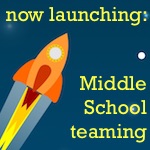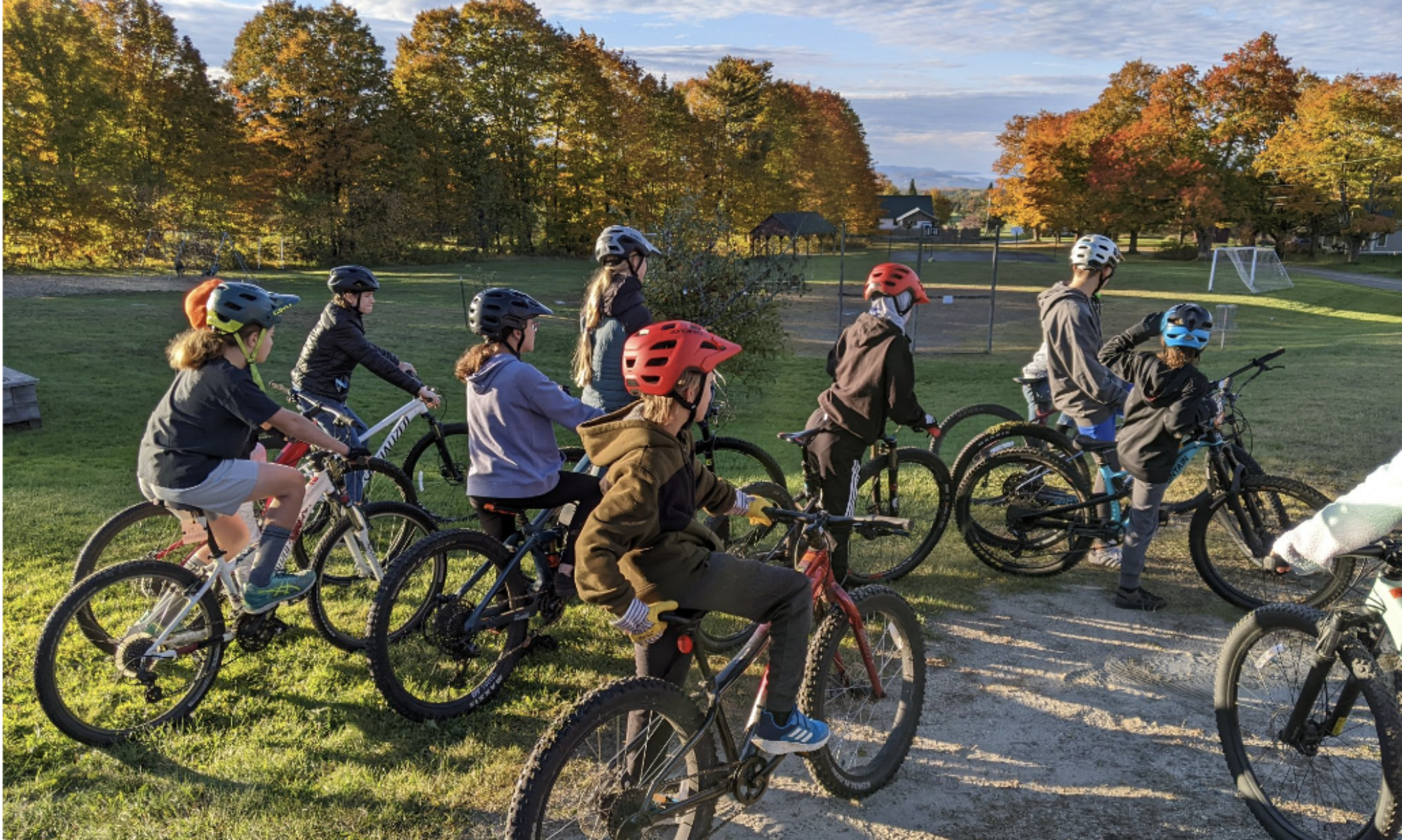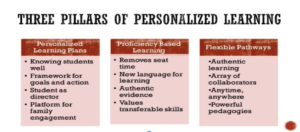New ways to approach teaming
 Have you every showed up to in-service wondering what the new initiatives for the year will be? Or wondered how to continue to meet the demands of the district and school while balancing the the needs of 21st century young adolescents?
Have you every showed up to in-service wondering what the new initiatives for the year will be? Or wondered how to continue to meet the demands of the district and school while balancing the the needs of 21st century young adolescents?
takes a deep breath
The answer, I suggest, is teaming, but with a new focus.
So the new challenge?
In addition to teams creating vision statements and norms, planning interdisciplinary units where students can make connects to various disciplines in a real world context, we are asking folks to now facilitate learning through the lens of Personalization, Proficiency, Flexible Pathways and the Transferable Skills. In Vermont, those are:
- Clear and Effective Communication
- Self Direction
- Creative and Practical Problem Solving
- Responsible and Involved Citizenship
- Informed and Integrative Thinking
A secondary challenge is to finding programs and systems that allow for this type of feedback and communication.
This lens pushes us to examine many of the current practices and asks us to find new/different ways to guide students. This is the opportunity.
In essence, we are asking teams to know students as learners in ways not many have achieved, become more calibrated on learning activities and outcomes, collaborate in ways above and beyond that once a week team meeting, and commonly report out on content as well as the above referenced Transferable Skills.
You need to start somewhere
This year I was fortunate enough to help facilitate a few schools with in-service. Goose Chase is an digital scavenger hunt for the masses that uses photographs as evidence. It’s a game where the creator can add missions (or tasks) for individuals or teams to complete. In this case, this tool was used to help teams, new and unchanged, collaborate and think about learning in new ways.
It is amazing the power of a Team Selfie!
We planned several missions with the purpose of fostering a deeper level of teaming as well as a platform for sharing the learning. Some of our mission were:
- Make a shape or human sculpture, using every team member, that represents your team ideal/vision/goal.
- Take a picture that identifies the importance of Teaming.
- Take a picture of your team Norms!
- Find a street sign that personifies a team member. Take a Photograph.
[huge_it_slider id=”11″]
Getting back to the opportunity
As many of us start to embrace this journey with students we need to keep redefining our roles within a team. With activities like Genius Hour, Passion Projects, and Maker Spaces becoming more popular our role and support start to look different.
As we transfer the accountability for learning to students this also allows our focus to shift to supporting students questions. Our need to craft detailed lesson plans into the wee hours of the night is diminishing.
Teams are also utilizing digital collaborative tools to continue the conversation when being physically present is not an option. The article Strengthening Teams through Technology identifies some great strategies and tools to allow for meaningful work to continue.
Some other resources:
- What Google Learned from its quest to Build the Perfect Team
- Interdisciplinary Teaming
- Personal Learning Framework
- Project Based Learning
Questions to ask about your team
Although this shift can feel uncomfortable at first, the trust and confidence you build with colleagues and students will eventually start to feel “normal.” Let’s end with some guiding questions to think through as a team:
- How often does your team look at student work and provide feedback?
- What structures are in place to allow students to guide their own learning?
- How has your team empowered students to become leaders?



Comments are closed.